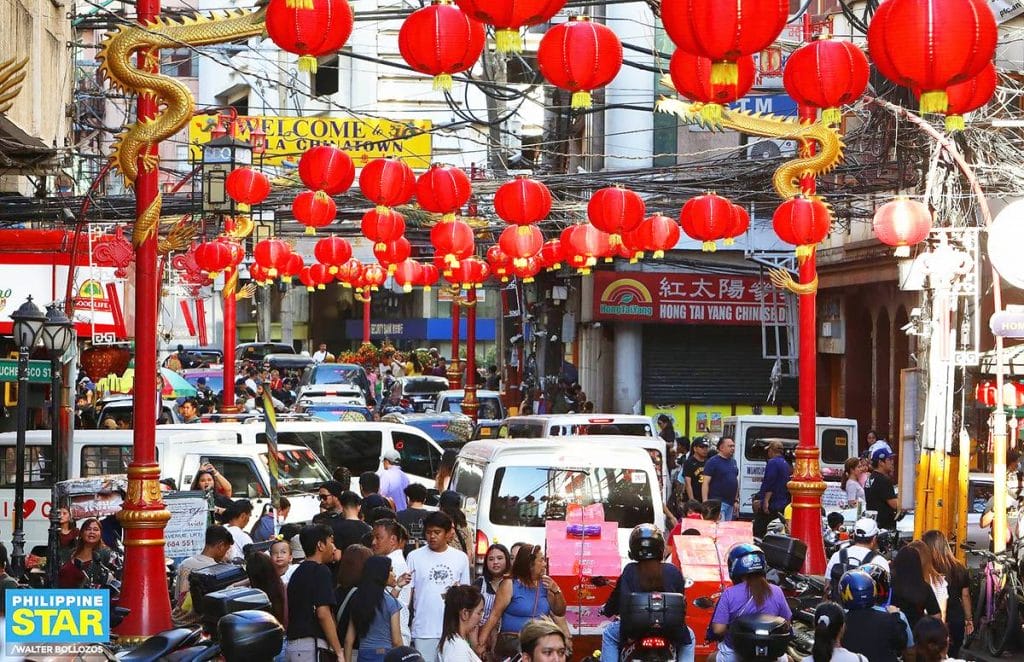Xīn nián kuài lè. Gōng xǐ fā cái. Happy New Year. Wishing you prosperity.
This Saturday, February 10, 2024, Chinese around the world will be celebrating the Lunar New Year and welcome the Year of the Wood Dragon.
The Philippines is one in this observance. Proclamation Nos. 453 and 368 declared February 9 and 10, 2024 as special non-working holidays throughout the country to allow many to celebrate the Chinese New Year.
Why is Chinese New Year widely celebrated? What is the significance of the dragon? How has the dragon been integrated into our own culture and architecture?

Chinese New Year (CNY)
Observed for millennia, CNY falls on the second new moon after the winter solstice and signals the start of spring, thus referred to as Chun Jie or Spring Festival.
Due to the Chinese diaspora, estimated at around 10.7 million in 2019, their commemoration is further joined by countless others around the globe.
Chinese zodiac
The story has it that all creatures were asked to join a race, with the first twelve to cross the line to be included in the calendar, i.e. the Chinese zodiac. Unlike the western zodiac which is based on the constellations’ positions and allocated two half-months, these twelve animals namely rat, ox, tiger, rabbit, dragon, snake, horse, goat, monkey, rooster, dog, and pig were assigned a year each.
Chinese astrology system also involves five elements fire, earth, metal water, and wood. Wood, in particular, is associated with idealism, bold action, and imagination.
With twelve 12 animals and five elements, the entire zodiac-element cycle totals 60 years. The last time we had a wood dragon year was in 1964-1965.
Chinese Dragon
The dragon represents “evolution from the ancestors and qi energy”. Chinese people believe they are descendants of the dragon.
The dragon is closely associated with the Emperor (the latter as incarnate) and symbolizes imperial authority and power, and control of the sky and the waters.
It is also believed to have the ability to address impediments and face obstacles to attain success. Thus, it is culturally associated with prosperity and good luck.
People born in the year of the dragon are expected to be intelligent, ambitious, and goal-oriented, will be visionary leaders, and have good fortune in their lifetime.
Dragon Dance
In addition to the lion dance, the Chinese New Year celebration will not be complete without the dragon dance, with its wavy movement following the drum’s rhythmic beats. The dance symbolizes auspiciousness and good omen, welcomes good luck, and drives evil spirits away.
Contrary to the common notion, the dragon’s color need not be limited to red, the Chinese favorite for luck and a good future. Colors like blue and green symbolize the approaching of spring, new life, plant growth, and great harvest; yellow – is the emperor and represents wisdom, good fortune, and power; and gold symbolizes wealth, prosperity, strength, harvest, and power.
Architectural features
The dragon and its nine sons are widely seen in numerous Chinese architectural features through ornate decorations and sculptures. The attention for detail are also intended to show their beauty.
Roofs are often adorned with small lion-shaped, cross-legged figurines, and angled upward to represent the dragon’s shape. Graves or monuments have turtle-shaped elements carrying heavy objects; while stone tablets and posts/poles include dragon-like images.
The next time you venture into Chinatown, do not forget to look out for the dragons. They are also intrinsically part of our culture and tradition.
Lóng nián dà jí. Great luck in the Year of the Dragon.
References: “How do the Chinese use architectural features to express cultural values?” (houses-apartments.com); “The 24 Solar Terms” by Kelly Peng (chinahighlights.com); “Chinese Dragons — Facts, Culture, Origins, and Art” by Mike Ho (chinahighlights.com); and “This Is What Your Chinese Zodiac Element Is (and What It Means for You)” by Taylor Markarian (rd.com).
* * *
Henry L. Yap is an Architect, Fellow of both Environmental Planning and Real Estate Management. He is one of the Undersecretaries of the Department of Human Settlements and Urban Development.
